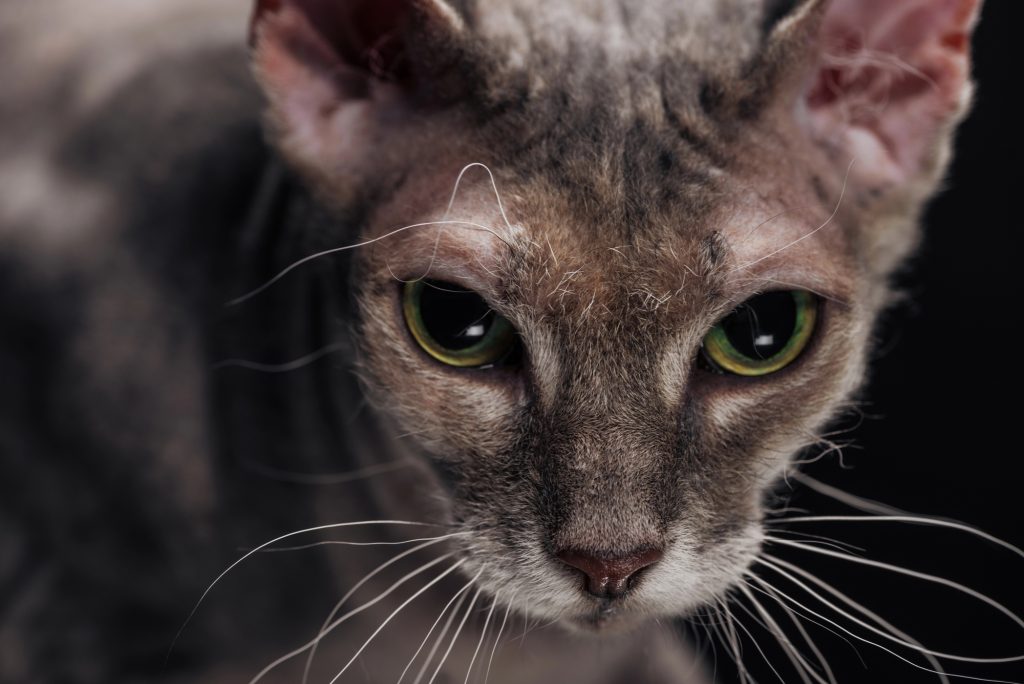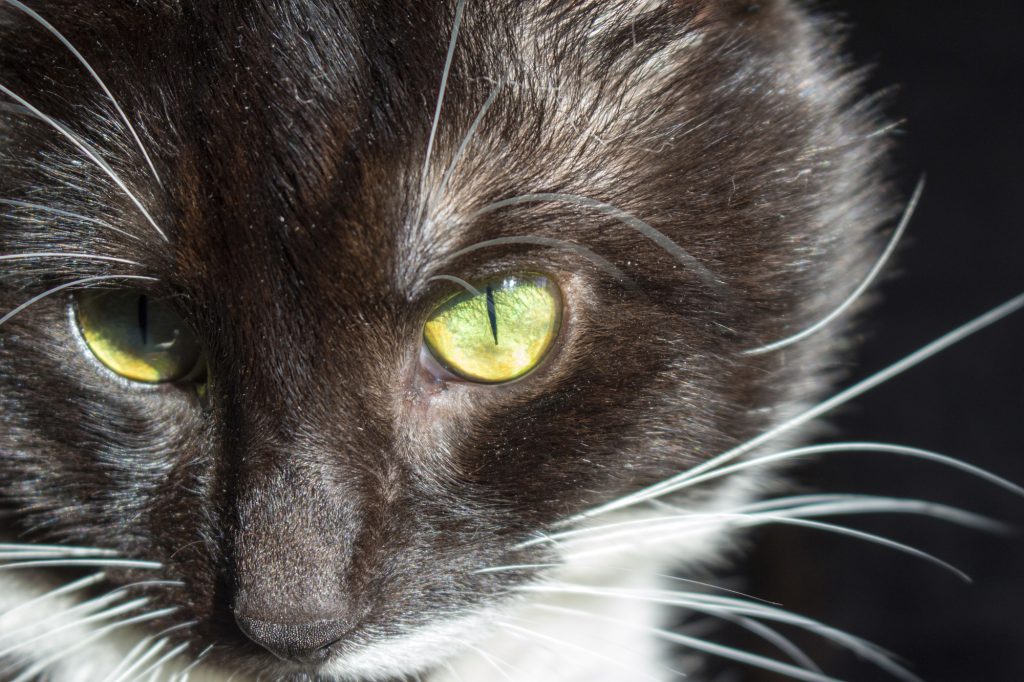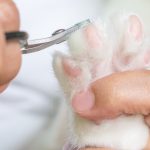Table of Contents
Many cat owners may ponder whether trimming their furry friend’s whiskers is safe or necessary. It’s essential to understand that cat whiskers are not just hair but susceptible tactile sensors. These vibrissae, the scientific term for whiskers, are deeply embedded in the cat’s skin and connected to the nervous system, making them a vital part of a cat’s sensory apparatus. Trimming them could significantly impact their spatial perception and overall well-being.
If you’ve ever considered trimming your cat’s whiskers, it’s time to pause and learn more about what whiskers do for your cat. Stick around to explore why these tactile hairs are indispensable to your cat’s daily life and why they should be untouched. Discover the role whiskers play in your cat’s world and how you can support their natural functions.
Exploring the Function of Cat Whiskers
Cat whiskers are a remarkable biological feature that plays a multifaceted role in feline life. These sturdy, thick hairs, technically called vibrissae, extend from the cheeks, eyebrows, chin, and even the forelegs of cats. They are set more profound in the skin than regular fur and are surrounded by nerve cells, making them highly sensitive to environmental cues.
Whiskers are an essential part of a cat’s tactile sensory system and contribute to their spatial awareness. They act as environmental scanners, allowing cats to detect and navigate around obstacles, gauge the width of openings, and sense changes in their surroundings, even in complete darkness. This sensory tool is invaluable for cats, especially when hunting or exploring unfamiliar territories.
Sensory Tools for Navigation and Spatial Awareness
Cats use their whiskers as natural radar systems. These vibrissae can detect the slightest breeze, enabling cats to sense approaching dangers or the movement of prey. The whiskers’ length is typically equal to the cat’s body width, allowing them to judge whether they can fit through narrow passages without visual confirmation.
These sensory hairs are so sensitive that they can pick up on vibrations in the air, helping cats measure distances and changes in their environment. For a nocturnal hunter like a cat, whiskers are indispensable in providing feedback about objects’ location, size, and texture, even when visibility is low.
Emotional Indicators and Communication Aids
Aside from their navigational purposes, whiskers also serve as emotional cat barometers. When a cat is relaxed and content, its whiskers remain still and positioned to the side. However, if a cat feels threatened or aggressive, its whiskers will pull back against its face. This subtle body language can signal to other animals or humans about the cat’s mood.
Whiskers can act as communication aids in social interactions. For example, during a face-to-face meeting, a cat may push its whiskers forward to gather more information about another cat or person. Understanding these cues can help cat owners better interpret their pets’ feelings and responses to different situations.

The Potential Consequences of Trimming Cat Whiskers
Cutting or trimming a cat’s whiskers can adversely affect their health and behavior. Since whiskers are an essential sensory tool, altering them can cause confusion, disorientation, and anxiety in cats. Cats may have difficulty navigating their environment without their full set of whiskers, which can lead to accidents or injuries.
In addition to physical harm, whisker trimming can impact a cat’s mental well-being. Cats rely on their whiskers for confidence and security in their surroundings, and when these are compromised, a stressed and uneasy pet may result. Therefore, it is imperative to avoid trimming whiskers to maintain a cat’s natural ability to interact with the world around them.
Disorientation and Stress in Felines
When a cat’s whiskers are damaged or cut, it can lead to a profound sense of disorientation. These sensory hairs are so crucial that even the slightest alteration can destroy a cat’s understanding of its surroundings. This confusion can lead to a lack of coordination, making it difficult for cats to move around with their usual grace and agility.
The stress caused by whisker trimming can manifest in various behavioral changes, such as increased hiding or avoidance of exploration. Cats may become more clingy or, conversely, more standoffish as they struggle to adapt to their impaired sensory input. Cat owners must recognize these signs and prioritize their cat’s sensory health.
Whisker Fatigue and Its Effects
Whisker fatigue is a condition that can occur when a cat’s whiskers are constantly stimulated, such as by touching walls or being in a cramped space. This overstimulation can lead to sensory overload, causing discomfort and stress for the cat. Whisker fatigue may result in changes in behavior, like avoiding food bowls that are too narrow, as the sensation of their whiskers constantly brushing against the sides can be unpleasant.
To prevent whisker fatigue, cat owners should ensure their pets have plenty of open space to move around and use appropriately sized feeding dishes. Monitoring your cat for signs of whisker fatigue, such as hesitation to explore or changes in eating habits, is crucial. If you suspect your cat is experiencing whisker fatigue, consider making environmental adjustments to alleviate their discomfort.
Debunking Myths: Can Cats Feel When Their Whiskers Are Cut?
There’s a common misconception that cats do not feel anything when their whiskers are cut because they are just hairs. However, this belief is far from the truth. Whiskers are deeply rooted in the skin and connected to a rich supply of nerves. When trimmed or damaged, whiskers can cause discomfort and even pain to the cat, much like the sensation we might feel when pulling out hair from the root.
Understanding the sensitivity of whiskers is crucial for cat owners. Although cats may not exhibit immediate pain when their whiskers are cut, they could experience a range of sensations from discomfort to disorientation. It’s essential to respect the natural design of your cat’s whiskers and leave them intact to avoid causing unnecessary distress.
The Sensory Connection Between Whiskers and Feline Well-Being
Whiskers are more than just facial hair; they are a vital part of a cat’s sensory apparatus connected to the nervous system. They provide cats crucial information about their environment and are integral to their sense of touch. Any interference with the whiskers, such as trimming or cutting, can disrupt this sensory connection and harm a cat’s ability to function confidently in its environment.
Cats rely on their whiskers for daily activities, from judging jumps to sensing prey. Protecting these sensory hairs is part of ensuring a cat’s overall well-being. Recognizing the connection between whiskers and feline health is critical to providing the best care for our whiskered companions.

The Regrowth Cycle of Cat Whiskers
While it’s crucial not to trim a cat’s whiskers, it’s also essential to understand their natural growth cycle. Whiskers, like all hair, go through phases of growth and shedding. Cats will occasionally shed their whiskers, and new ones will grow in to replace them. This normal process does not typically cause discomfort, as it happens naturally and without human intervention.
The regrowth of whiskers can take some time, and during this period, it’s essential to be patient and not interfere with the process. Cat owners should monitor their pets for any signs of distress or changes in behavior that may indicate discomfort during the regrowth phase. Allowing whiskers to grow back naturally is the best way to ensure your cat remains comfortable and capable of navigating their world.
Understanding the Natural Shedding and Regrowth Process
Cats naturally shed their whiskers occasionally, just as they do with their fur. This shedding does not typically bother cats because it’s a gradual process that allows a new whisker to grow as an old one falls out. The new whiskers will grow back to their original length and continue to serve their sensory purpose.
Owners should refrain from pulling or plucking whiskers, as this can cause pain and damage to the sensitive areas from which they grow. If your cat’s whiskers appear damaged or are not regrowing correctly, consult a veterinarian to rule out any underlying health issues. Remember, the best practice is to allow your cat’s whiskers to follow their natural shedding and regrowth cycle without interference.
Final Thoughts on Whisker Trimming and Feline Health
Considering the critical role whiskers play in a cat’s sensory perception and emotional expression, it’s evident that whisker trimming can harm a feline’s overall well-being. Whiskers are an integral part of how cats interpret their environment. Therefore, altering them in any way can cause confusion, fear, and stress, which are not conducive to a happy and healthy pet.
In summary, the best practice is to allow a cat’s whiskers to remain untouched. They are not just another type of fur but rather a vital sensory apparatus that supports their spatial navigation, safety, and communication. Taking care of a cat means understanding and preserving its natural characteristics; this includes recognizing the importance of its whiskers. Doing so ensures that our beloved feline friends live their lives to the fullest, with all their senses sharp and intact.

Hi, I’m Zoey, a devoted mom to two charming Siamese cats. My passion lies in assisting fellow pet owners in providing optimal care for their cats. On CatsEuphoria, I share practical tips and relatable stories, inviting you to join me in appreciating the authentic bond between humans and our beloved feline companions.




